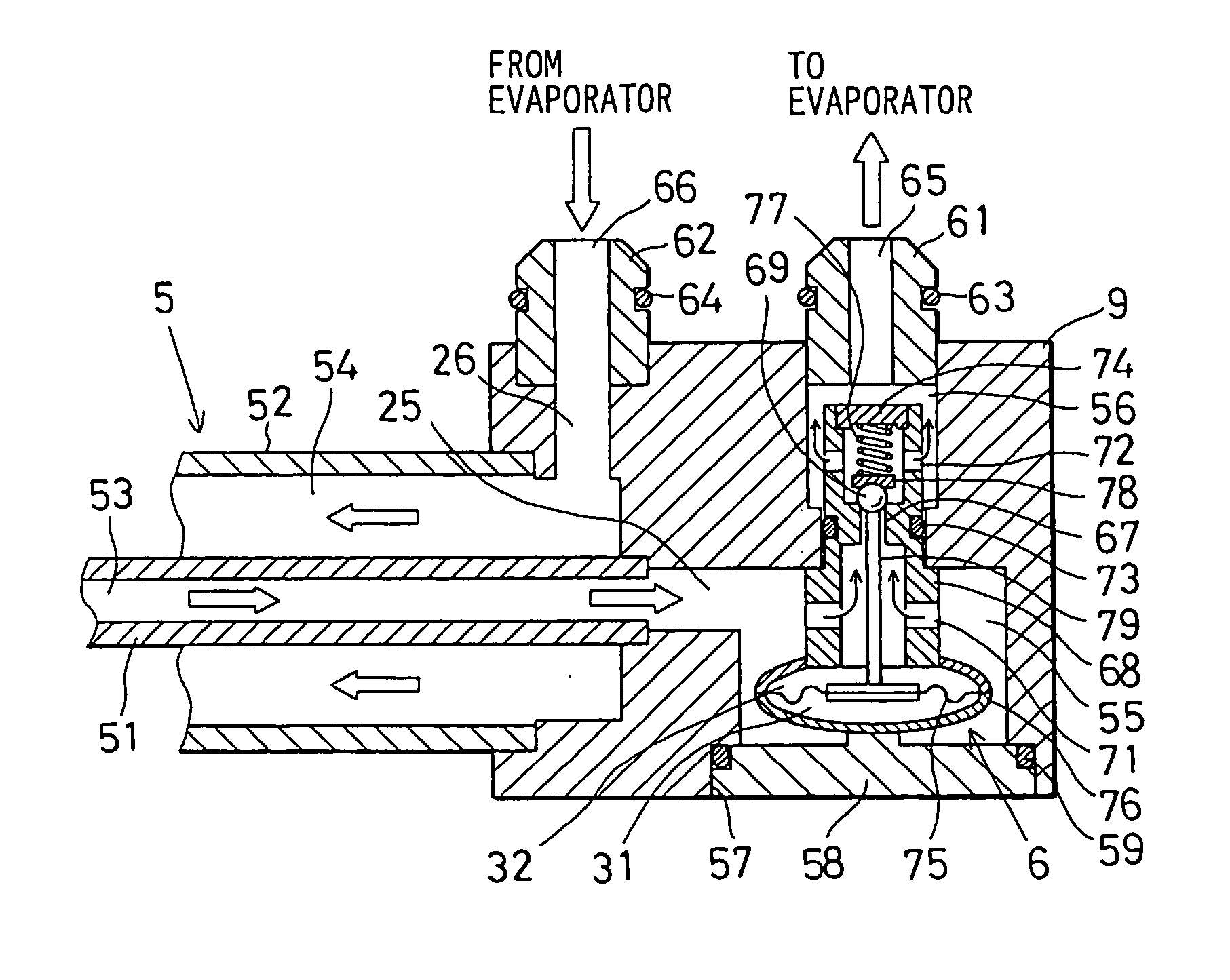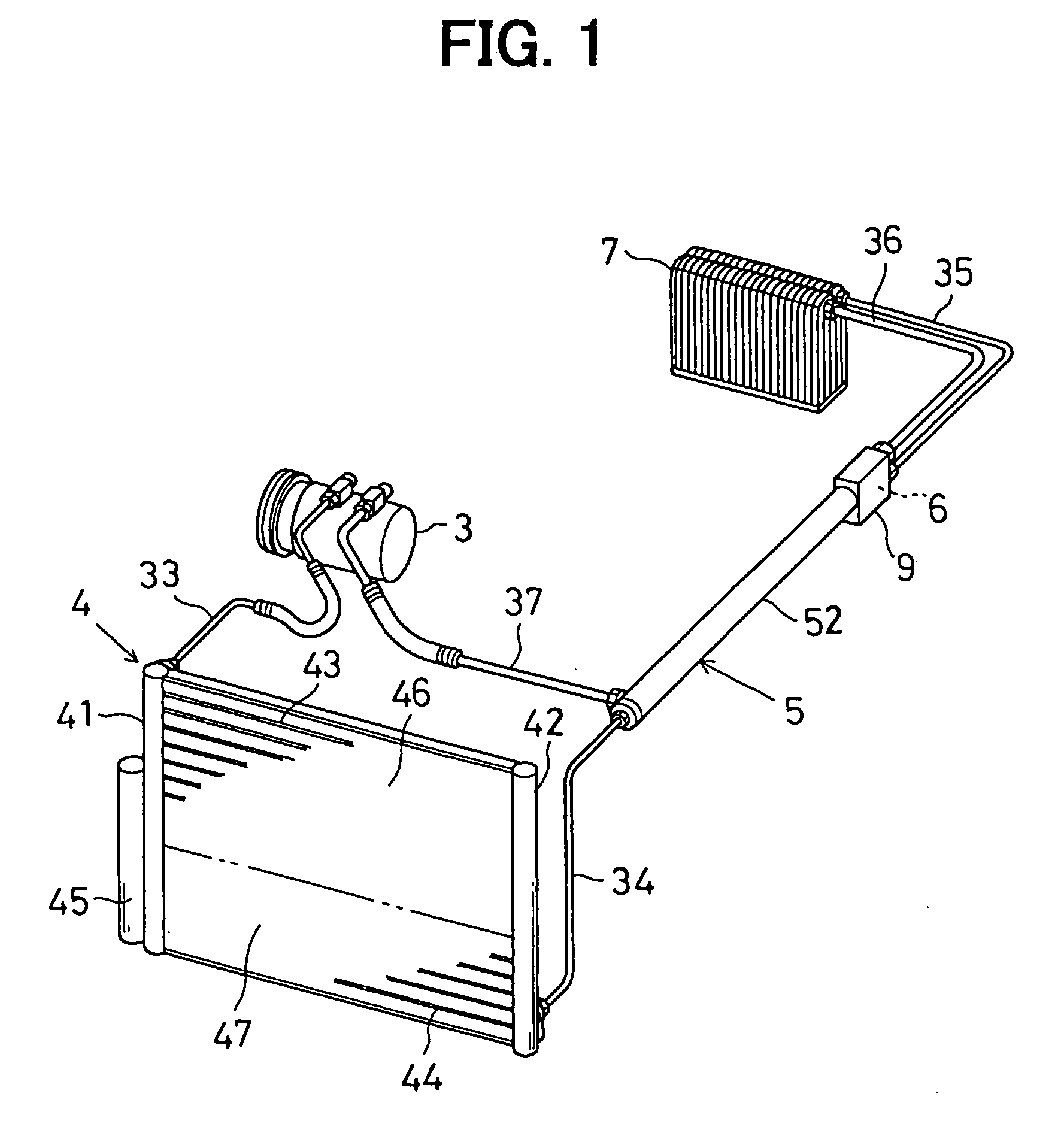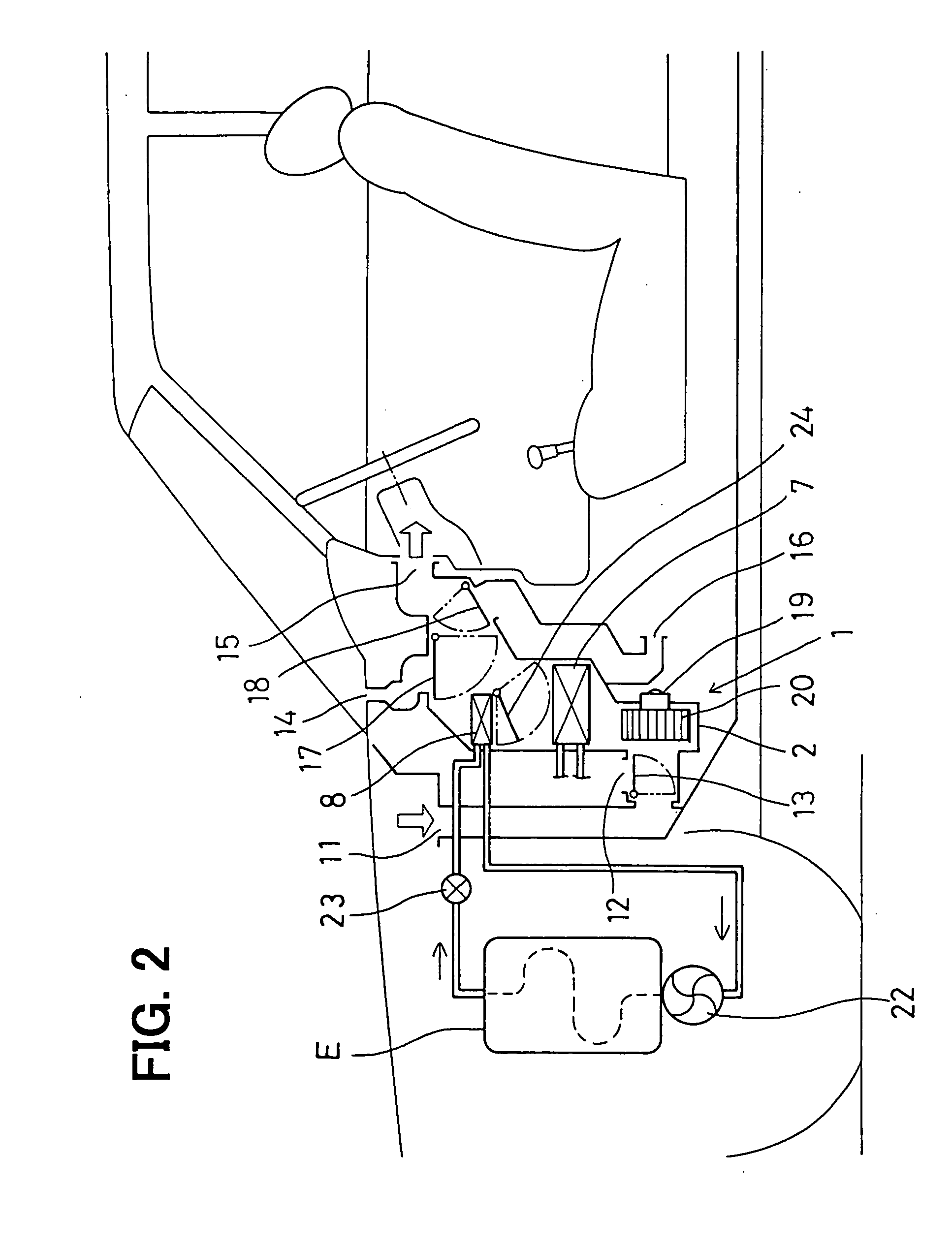Refrigeration cycle system
a technology of refrigerant cycle and cycle system, which is applied in the direction of indirect heat exchangers, transportation and packaging, light and heating equipment, etc., can solve the problems of not being able to actually expect greater improvement in the performance of cooling passenger compartments, and affecting the efficiency of refrigerant exchang
- Summary
- Abstract
- Description
- Claims
- Application Information
AI Technical Summary
Benefits of technology
Problems solved by technology
Method used
Image
Examples
Embodiment Construction
]
[0087] As described above, the refrigeration cycle of the vehicle air conditioning system according to this embodiment allows the double-pipe refrigerant-to-refrigerant heat exchanger 5 to exchange heat between the high pressure liquid refrigerant delivered from the subcooler 47 of the sub-cooling condenser 4 to the evaporator 7 and the low pressure, liquid and gas two phase refrigerant to be delivered from the evaporator 7 to the compressor 3. This especially allows the level of the superheating (SH) and the degree of dryness on the outlet side of the evaporator 7, among other things in the performance of the evaporator 7, to be fed back to the level of the subcooling (SC) upstream of the throttle hole 67 of the reverse sub-cooling control valve 6. That is, the amount of the refrigerant circulating through the refrigeration cycle is adjusted in response to the level of subcooling (SC), thereby making it possible to indirectly control the level of the superheating (SH) and the degr...
PUM
 Login to View More
Login to View More Abstract
Description
Claims
Application Information
 Login to View More
Login to View More - R&D
- Intellectual Property
- Life Sciences
- Materials
- Tech Scout
- Unparalleled Data Quality
- Higher Quality Content
- 60% Fewer Hallucinations
Browse by: Latest US Patents, China's latest patents, Technical Efficacy Thesaurus, Application Domain, Technology Topic, Popular Technical Reports.
© 2025 PatSnap. All rights reserved.Legal|Privacy policy|Modern Slavery Act Transparency Statement|Sitemap|About US| Contact US: help@patsnap.com



